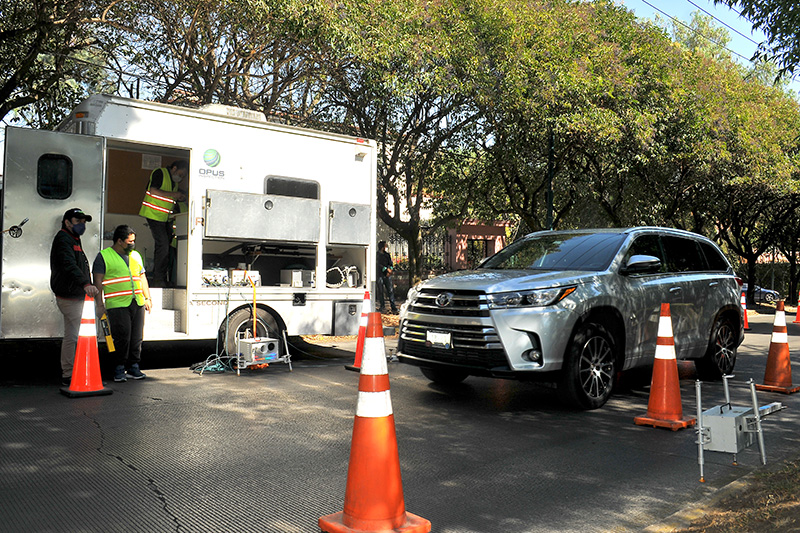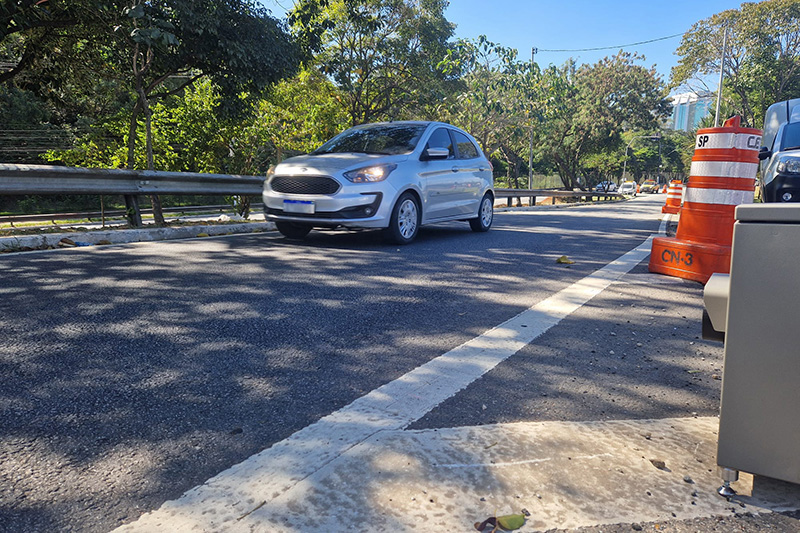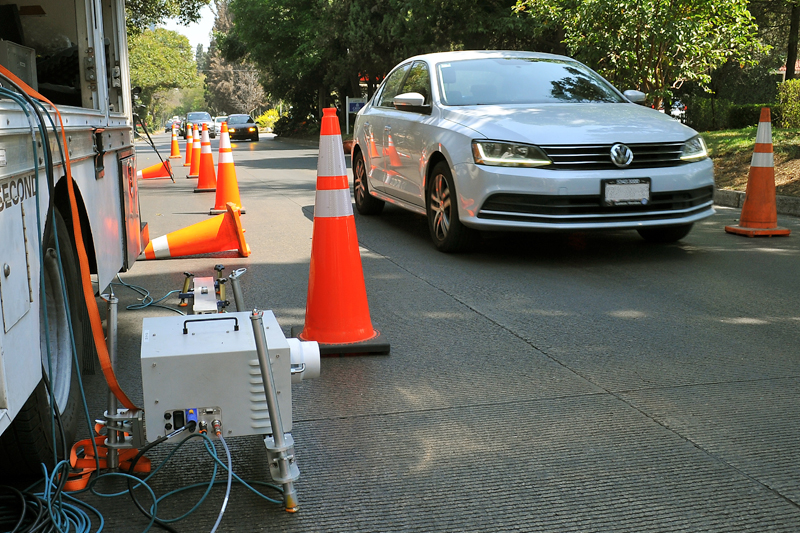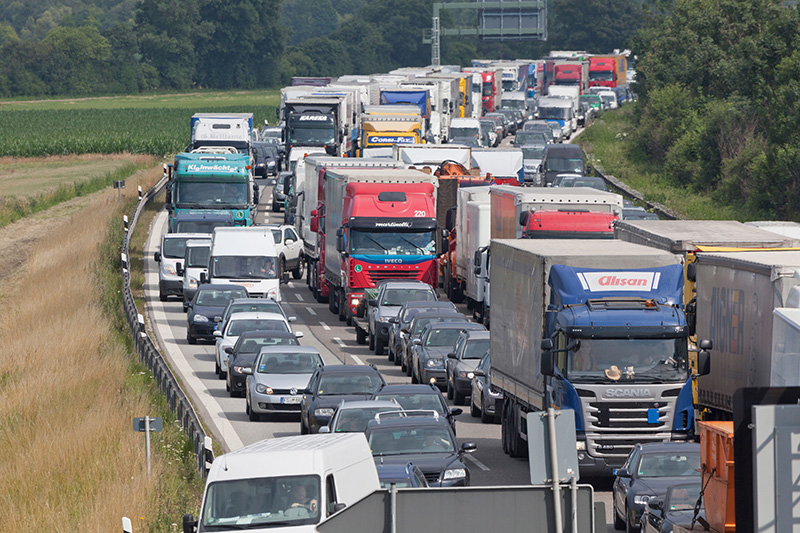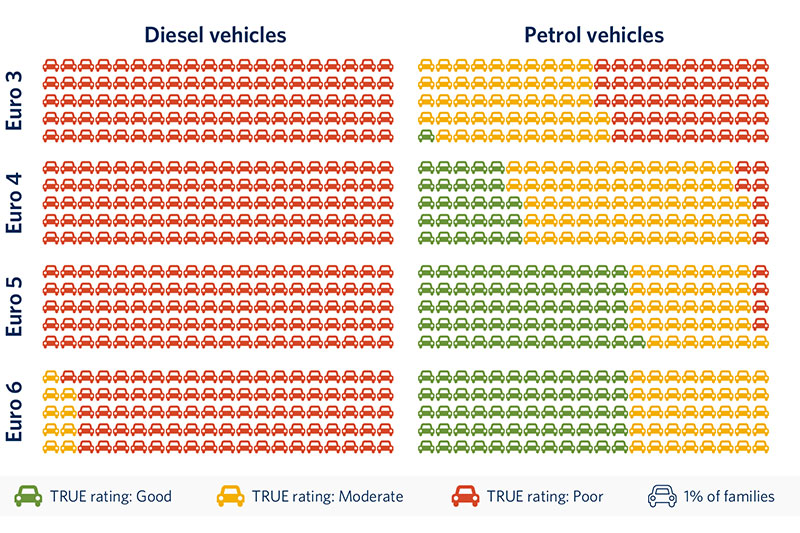Continued remote sensing campaigns in Scottish cities predict likelihood of high-emitting trucks
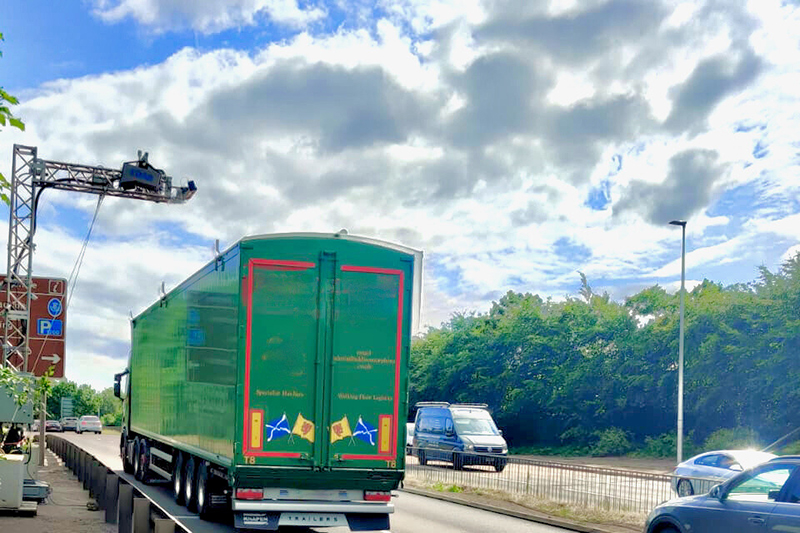
Emissions from trucks of newer emission standards have decreased, but excess emissions from a small portion of malfunctioning or tampered trucks should be addressed, says a new TRUE paper studying data from four Scottish cities.
In a continuation of ongoing work with Transport Scotland, the TRUE Initiative deployed remote sensing technology in four cities across Scotland in 2022 to help enhance existing air pollution policies and identify opportunities for further action. Similarly to the previous year’s testing, this deployment measured a majority of passenger cars, including taxis and private hires, with newer vehicles subject to Euro 6d-TEMP and Euro 6d standards accounting for roughly 20% of the samples.
Testing in 2022 also saw a significant sample of heavy-duty vehicles, including many trucks certified to the newest emission standard, Euro VI-E, which was introduced in 2021 and requires cold starts to be included in on-road testing. Euro VI-E trucks exhibited real-world NOX emissions 20% lower than those from trucks of the prior standard, Euro VI-D.
Despite a significant improvement in the emission performance of newer trucks certified to Euro VI or above, a small portion of these trucks were still emitting emissions at highly elevated levels. As well documented, one of the main reasons for excess emissions is malfunctioning or tampered emission control systems.
The large number of truck emission measurements received from the testing campaigns allowed researchers to define an enforcement threshold that is able to identify trucks with possible malfunctioning or tampered emission control systems. These trucks were emitting nearly 4 times higher median emissions than the rest of the sample. This novel methodology used repeat measurements of individual trucks to identify certain vehicles that were constantly emitting high levels of NOX emissions.
Researchers identified 5.2 g/kWh (or 24 g/kgFuel) as the NOx threshold that likely identifies a truck is high emitting. With continuous remote testing, this NOX threshold could ensure that trucks with emissions exceeding the identified limit are consistently high-emitting vehicles. The success rate of detecting these potentially problematic trucks increases to 91% with at least five emissions measurements. Using remote sensing technology deployed roadside, detecting vehicles with possible malfunctioning or tampered emission control systems would minimize traffic disruption and require less manpower.
Other key findings include:
- measured showed lower NOX emissions compared to those measured previously and those measured under the TRUE Initiative in other European cities, such as Warsaw and Brussels.
- Emissions from both diesel and petrol passenger cars exhibited a clear downward trend from 2000 to 2022, most notably among diesel cars, which demonstrated a 95% reduction over the last two decades.
- Older taxis registered before 2016 emit twice as much as other private cars of the same registration year, however newer plug-in hybrid taxis showed significantly lower real-world NOX.
As part of the Air Remote Sensing Project in Scotland, around 660,000 vehicular emissions data were collected between April and September 2022 across Aberdeen, Dundee, Edinburgh, and Glasgow. In conjunction with the International Council on Clean Transportation, Hager Environmental & Atmospheric Technologies (HEAT), and Environmental Resources Management (ERM), this ongoing project aims to establish a database of real-world emissions from the Scottish fleet and is the largest remote emission-sensing data collection project in Europe to date.
Building upon the analysis from the previous report, this testing campaign specifically sought to:
- Assess the real-world emission performance and regulatory compliance of passenger cars registered since 2000, with a particular interest in the performance of newer diesel passenger cars certified to Euro 6d-TEMP and Euro 6d.
- Expand on the previous investigation of the emission performance of different taxi types, including hybrid and retrofit taxis.
- Explore ways to determine thresholds for the enforcement of NOX high emitters with potentially defective or tampered emission control systems.
The report suggest Policymakers in Scotland may consider deploying remote sensing instruments capable of accessing vehicle registry information in real-time across major pollution hubs, thereby identifying possible high-emitters, or those with tampered emission control systems, for inspection.
The key results and policy recommendations were presented by Kaylin Lee to the Scottish Air Quality Annual Seminar on March 20, 2024.
To read the report, please click here.
Main picture credit: Yolla Hager (HEAT).


